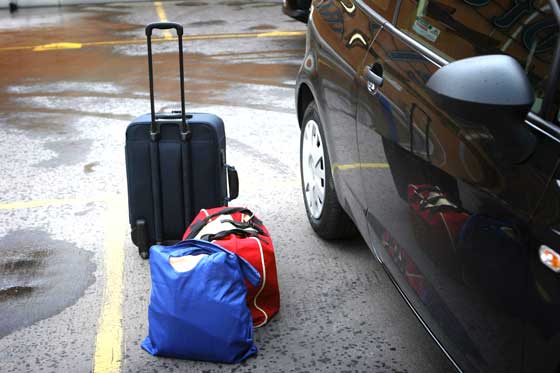TyreSafe, the UK’s leading tyre safety organisation is urging drivers to check their tyres before setting off on their travels.
Despite the recent poor weather, many families are likely to be staying on these shores for their annual break. With tightening budgets and a once-in-a-lifetime summer of sporting and cultural events this year, a staycation is more attractive than ever.
However, TyreSafe is advising car owners who remain in this country rather than flying abroad for their holidays, not to let their guard down when it comes to safe motoring.
Stuart Jackson, chairman, Tyre Safe, said: “A lot of people make a checklist before they go on holiday, such as to remind themselves to pack a toothbrush, sun cream and other everyday essentials. However, we’d suggest that they put tyre checks at the top of the list so they can enjoy their holiday and arrive safely at their destination, whether it’s just for a day trip or further afield for a longer stay.”
Unfortunately, if previous years are anything to go by then roadside breakdown recovery crews will be kept very busy dealing with tyre related incidents. Last year the AA reported that it dealt with 57,000* tyre related call outs during the summer, making tyres the most common problem for its crews to fix.
The good news is, however, that many tyre related incidents can actually be avoided with a few simple checks.
Before setting off, the tyre inspections should include checking the Air, Condition and Tread – ACT.
Having the correct air pressure is vital at all times and particularly so when carrying extra weight, such as luggage, bikes and additional passengers. It may mean that vehicles need to have their tyres inflated to a higher pressure to stay safe. Details of correct tyre pressures can be found in the vehicle handbook, inside the fuel filler cap or on the driver’s door sill.
Meanwhile, the condition of the tyres should be visually inspected. Remove any objects which have become embedded in the tread. If any cuts, lumps or bulges are found then a qualified professional should check the tyres immediately.
It’s also wise to check tread depth so the tyres can cope with wet roads, which unfortunately have not been that uncommon so far this summer. The legal minimum tread depth for cars in the UK is 1.6mm across the central three quarters of the tyre, around its entire circumference. To quickly check this, drivers can take the 20p test, details of which can be found on the Tyre Safe website
TyreSafe has also developed a short animated movie featuring its family of crash test dummies explaining how to perform these important checks.
“Just a few minutes spent inspecting the vehicle’s tyres, including any spares, can save a lot of time and hassle later on if there is a tyre related incident,” added Jackson.

